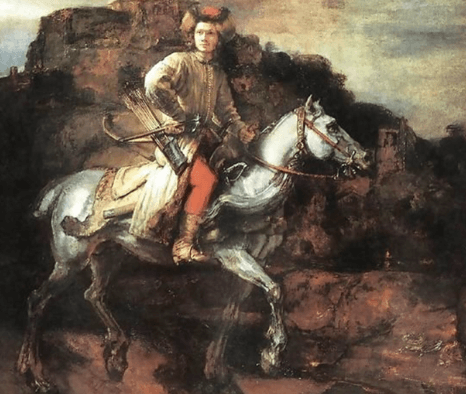The Impact of Stereo blindness in Rembrandt’s Artworks

Stereo blindness is the inability to perceive 3D objects accurately; each eye can’t combine or compare images. It’s easy for stereo blindness to go unnoticed as the signs are not obvious. It could come across in subtle ways such as clumsiness, motion sickness, or poor eye-hand coordination.
Rembrandt Harmenszoon van Rijn was a Dutch Golden Age painter during the 17th Century. He pursued more self-portraits than any other artist in the Golden Age. He was renowned for his ability to portray people and objects realistically, as well as his vivid biblical and mythological scenes.
According to studies conducted on his paintings, famous artist Rembrandt van Rijn appears to have had stereo blindness. Rembrandt’s artwork is something to marvel at; however, his stereo blindness did impact his work but not negatively.
Landscapes
Studies have shown that more artists seem to have stereo blindness when compared to people with stereo-acuteness. However, this is not a disadvantage for them. Artists often learn to close one eye to replicate the 3D world onto a flat surface with greater accuracy. It is said that stereo blindness can actually aid artists in achieving this.
Among Rembrandt van Rijn artworks are beautiful landscape paintings. One such example is The Stone Bridge. This painting is full of detail and realistic objects; nothing looks out of place. Rembrandt managed to take the 3D world and paint it on a 2D medium.
The tones and shapes of the objects in the painting are full of depth and life. Clearly, Rembrandt’s stereo blindness worked to his advantage in depicting the natural world.
Self-portraits
A professor of neurobiology at Harvard, Margaret S. Livingstone, conducted an in-depth study on Rembrandt van Rijn art, particularly his self-portraits. Dr. Livingstone noticed that Rembrandt’s eyes were just slightly asymmetrical. One eye is always staring directly at the viewer, while the other is staring into the distance. These findings confirmed that the artist had walleye, which occurs when the eyes turn outward.
A specific self-portrait where this stands out is the Self-Portrait with Velvet Beret, where it’s clear that the eye on the right side of the painting is looking straight at the viewer, while the other eye seems to point slightly to the left side of the picture.
However, art experts argue that this could have been because he used a mirror to paint himself. By having the easel to the side of the mirror, he would be looking back and forth, which could have distorted his interpretation of his eyes’ position.
This flaw is minor, and it doesn’t affect the quality of his self-portraits. Overall, Rembrandt’s work with self-portraits is still profound and a pleasure to look at.
Portraits of Other People
Although Rembrandt van Rijn is famous for his self-portraits, he also painted many remarkable portraits of other people. Among these people were the Dutch Princess Amalia van Solms, his wife, Saskia, and his son, Titus. He would paint his subjects in an honest way, showing their true likeness.
In his portrait: Old Man with a Gold Chain, 1631, Rembrandt painted an elderly man adorned in a black velvet coat, a feathered hat, and gold jewelry. There is a vivid texture within the painting, from the luster of the steel gorget around his neck to the velvet material of the coat.
All the features of the man are proportional, unlike Rembrandt’s self-portraits. The same is true of all his other portraits of people. The unique style of Rembrandt’s portraits was that he would paint them as they were. He wouldn’t attempt to make them appear more attractive or exaggerate certain features as some artists would. Perhaps Rembrandt could owe this to his stereo blindness that aided his ability to replicate a three-dimensional subject onto the flat surface.
Historical Scenes
During the Renaissance and Golden Age, many artists would paint scenes from well-known historical stories. They would try to capture and depict the action within the artwork. Painters also used this opportunity to display their unique style; they could portray the characters according to their interpretation of the historical account.
Rembrandt was famous for his historical scenes, especially biblical ones. He proved his talent in how he depicted the emotions of people in the scenes so vividly.
In his artwork known as The Blinding of Samson, Rembrandt’s painting technique adds rhythm and movement to the scene. This painting is the first of its kind in pictorial tradition. We can see the emotion on all the characters’ faces; the story depicted is easy to understand, owing to how Rembrandt positioned his subjects.
One could say that the way he saw reality, due to his stereo blindness, made it easier for him to portray action-filled scenes in his paintings. Without perceiving 3D objects as people with stereo vision can, it might have helped Rembrandt focus on the dimensions he could paint on a canvas.
The Bottom Line
It is clear that Rembrandt van Rijn’s paintings accurately depicted reality. Rembrandt probably wasn’t aware of his stereo blindness, as many today aren’t. This proves that this was not a flaw but rather an advantage.








